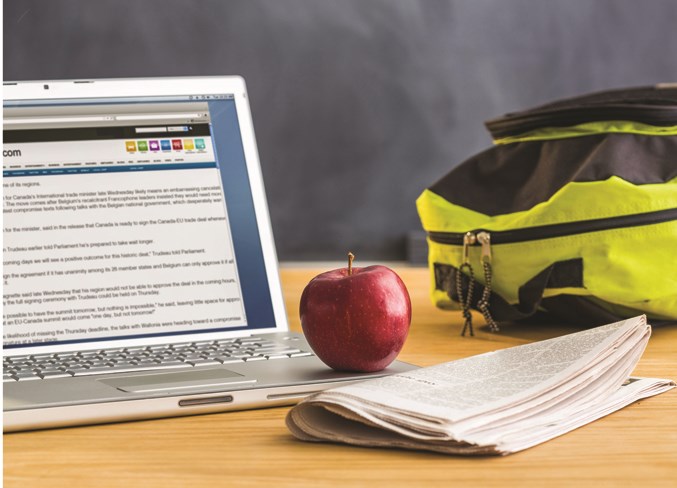Ensuring their students are well connected to learning tools and resources continues to be a priority for Northern Lights Public Schools (NLPS).
Across the division, there are approximately 1,110 devices such as laptops, Chromebooks, and desktop computers available for students. The overall student to computer ratio currently sits at 1.321.
“That’s a fairly significant piece that surely does demonstrate our students have access to technology devices in a much different way than they likely did even five years ago or 10 years ago,” said associate superintendent Bill Driedger.
During the May 30 board of trustees meeting, Driedger presented his report outlining just how connected students are, the changes being made in learning due to technology, and areas for improvement.
Aiding in the mission to have a device for every student was the development of Chromebooks.
“Chromebooks are a lot less expensive than laptops. They do come with some challenges because it’s a web-based system, which means that we need access to the web as well, and have to have conversations about bandwidth, speed, and those pieces as well.”
Not included in the device count are the desktop computers used by staff, which Driedger noted it’s not unusual to walk into a classroom and see students using for a project or doing research.
There is a lot of other technology at play within NLPS schools, including 501 school-based smart-boards with projectors.
Looking at the purchases made by schools for various devices, from the 2014/15 school year to the 2016/17 school year, an average of approximately $472,000 was spent on technology per year. About $96,000 was spent by IT on hardware and supplies in 2016/17, as they haven’t had purchase new servers for the past couple of years.
“As you spend more on tech, your text books and other resources are certainly going down as well,” noted Driedger.
Not only is technology a neat addition to the classroom, it’s becoming even more of a necessity. As new curriculum and resources are being developed in the province, Driedger stressed that chances are the vast majority of those resources are going to be online or web-based.
“Resources are changing, they’re moving online. That means, in my mind, three things: we have to have devices in the hands of students, the bandwidth in order to carry the information, and the appropriate training in place for our teachers.”
In addition to the devices themselves, NLPS schools utilize hundreds of software and subscriptions for online learning. The programs vary from school to school, including Google Apps for Education, the video streaming service Learn 360, and assistive programming like Read and Write Gold.
Technology has also allowed teachers to enhance their students’ studies, whether its video calling with an astronaut or connecting with a museum staff during a social studies class.
“There’s sort of a two-fold purpose around technology. The first is to provide robust and engaging learning opportunities linked to curricular outcomes for all students. The second piece is that we need to operate, we need to run as a system. So, we need to have technology that allows us to do both in a very efficient manner,” said Driedger.
In an effort to keep their technology, and staff, up to date, last year, the division enhanced their wireless capabilities in all schools, and ran mini summits for teachers on Google Apps and how to effectively use Google in their classrooms. They’ve also developed a digital learning team, comprised of IT staff, principals and teachers, and central office personnel to stay on top of the changing learning resources.
Moving forward, Driedger explained they’re looking at what the minimal standards for wireless connections in the division should be, and how to make sure all of their schools meet that.
“The connectivity looks different in some of our areas. Our outreach schools are the most impacted by that,” he said. “At this point in time, we have connectivity in all of our sites, but I can confidently say that our bandwidth would be higher in our traditional sites than it would be in some of our outreach sites. This is an ongoing concern.”
Board chair Arlene Hrynyk agreed that’s something they need to address.
“Our kids shouldn’t be disadvantaged because of where they live.”



